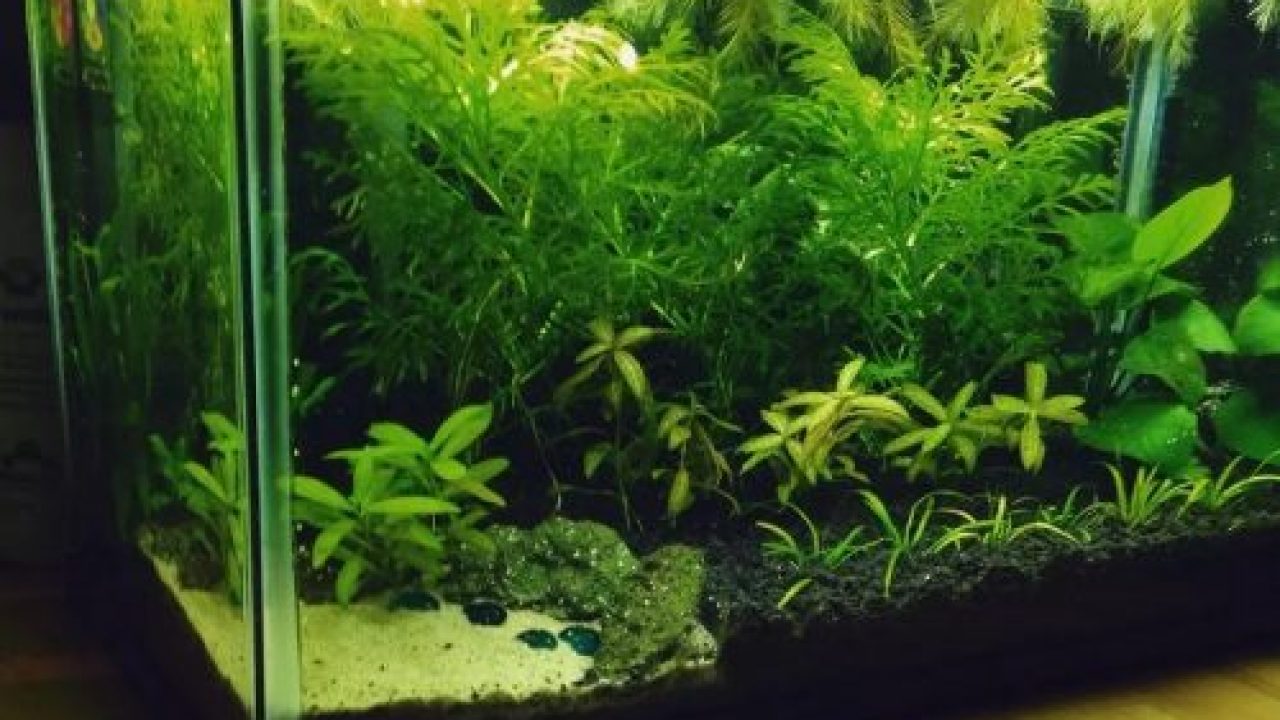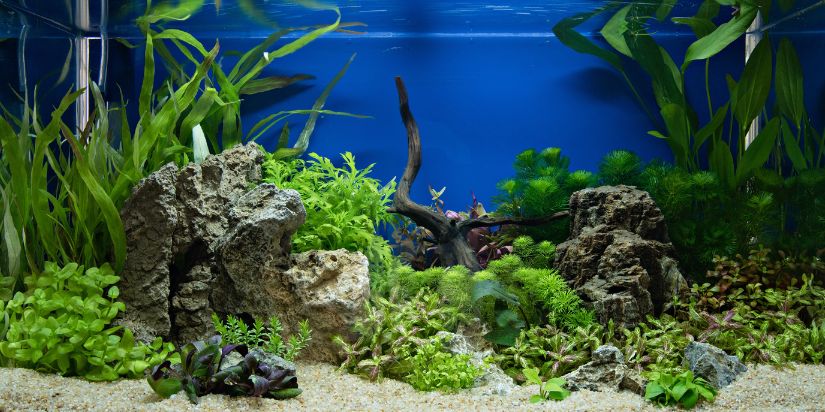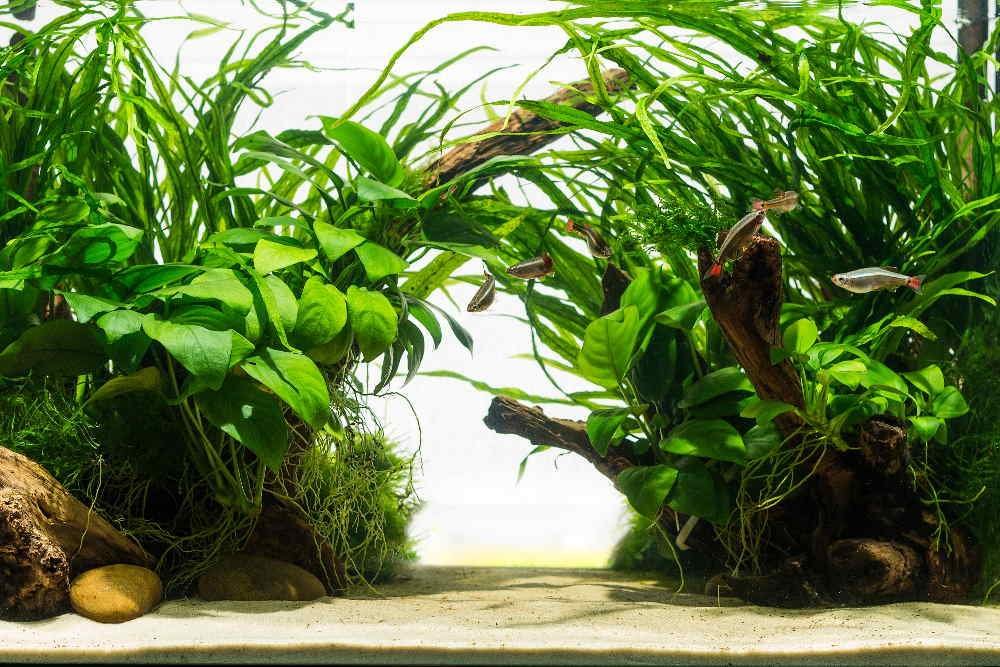Low-maintenance aquarium plants are easy to care for and require minimal effort. They thrive without constant attention, making them perfect for busy hobbyists.
Aquariums add beauty and tranquility to any space. But maintaining them can be challenging, especially for beginners. Low-maintenance plants are a great solution. They need less care, less light, and fewer nutrients. This means less work for you. These plants help keep your tank clean by absorbing waste.
They also provide shelter and food for fish. With low-maintenance plants, you can enjoy a beautiful aquarium without the hassle. Ready to find out more? Let’s dive into the world of easy-care aquarium plants.
Introduction To Low-maintenance Aquarium Plants
Creating an aquarium can be a rewarding experience. Yet, maintaining it can be quite a task. This is where low-maintenance aquarium plants come in. These plants are perfect for those new to aquariums or those with a busy schedule. They require minimal care and still add beauty to your tank.
Why Choose Low-maintenance Plants?
Low-maintenance plants make aquarium keeping easier. They do not need special lighting or added CO2. This makes them ideal for beginners. They can thrive in various water conditions. This reduces the need for constant monitoring.
Benefits Of Low-maintenance Plants
These plants offer many benefits. They help keep your tank clean. They absorb excess nutrients. This prevents algae growth. They also provide hiding spots for fish. This makes your aquarium more natural and beautiful. They require little care. This saves you time and effort. You can enjoy your aquarium without much hassle.
Characteristics Of Low-maintenance Plants
Low-maintenance aquarium plants are perfect for busy hobbyists. These plants thrive with minimal care and still enhance the beauty of your tank. Understanding their characteristics can help you choose the right plants for your aquarium.
Growth Rate
Low-maintenance plants usually have a slow to moderate growth rate. This means they don’t need frequent trimming. Examples include Anubias and Java Fern. These plants stay manageable in size.
Light Requirements
These plants often need low to moderate light levels. High light can cause algae growth, which is undesirable. Plants like Cryptocoryne and Hornwort do well in low light. They thrive without special lighting.
Popular Low-maintenance Plant Species
Many aquarium enthusiasts seek plants that require minimal care yet enhance the tank’s beauty. These low-maintenance plants are perfect for beginners and busy aquarists. Let’s explore some popular low-maintenance plant species.
Java Fern
Java Fern is a favorite among aquarium hobbyists. It’s known for its hardiness and ease of care. This plant has dark green, lush leaves that can thrive in various water conditions.
- Light: Low to moderate
- Temperature: 68-82°F (20-28°C)
- pH: 6.0-7.5
Java Fern can be attached to rocks or driftwood. It doesn’t need substrate planting. This plant grows slowly but steadily. It can tolerate low light and fluctuating water parameters.
Anubias
Anubias is another excellent choice for low-maintenance aquariums. Anubias species have broad, dark green leaves that are both attractive and durable.
- Light: Low to moderate
- Temperature: 72-82°F (22-28°C)
- pH: 6.0-7.5
Anubias plants are versatile and can grow attached to decorations. They require minimal fertilization and can endure low light conditions. These plants are slow growers but very resilient.
| Plant | Light | Temperature | pH |
|---|---|---|---|
| Java Fern | Low to moderate | 68-82°F (20-28°C) | 6.0-7.5 |
| Anubias | Low to moderate | 72-82°F (22-28°C) | 6.0-7.5 |
Both Java Fern and Anubias are ideal for those new to aquarium plants. Their low-maintenance nature makes them perfect for busy aquarists.

Credit: www.bunnycart.com
Planting And Care Tips
Low-maintenance aquarium plants are perfect for beginners and busy enthusiasts. They need minimal care and thrive in various conditions. This section provides key tips on planting and caring for these resilient plants.
Substrate Options
Choosing the right substrate is crucial. Gravel and sand are common choices. They provide good anchorage for plant roots. Nutrient-rich substrates boost plant health. They supply essential minerals and nutrients. Consider using a mix of both for optimal results.
Water Conditions
Water conditions greatly affect plant growth. Aim for a pH level between 6.5 and 7.5. This range suits most low-maintenance plants. Maintain water temperature around 72-78°F (22-26°C). Consistent temperature prevents plant stress. Regular water changes are important. They keep the environment clean and healthy.
Common Challenges
Low-maintenance aquarium plants can thrive with minimal care. Common challenges include algae growth and ensuring proper lighting. These plants often require less pruning and fewer nutrients.
Low-maintenance aquarium plants are a great choice for beginners. But there are common challenges you might face. Understanding these can help you keep your aquarium healthy.Algae Control
Algae is a frequent issue in aquariums. It competes with plants for light and nutrients. If left unchecked, algae can overrun your tank. This makes it hard for low-maintenance plants to thrive. To control algae, maintain a regular cleaning schedule. Introduce algae-eating fish or snails. Reduce the amount of light your tank receives. This can help keep algae growth in check.Nutrient Deficiencies
Low-maintenance plants do not need much care. But they still need some nutrients to grow well. Nutrient deficiencies can cause yellow leaves or stunted growth. Regularly check your plants for signs of deficiency. Use a good quality fertilizer designed for aquarium plants. This can help maintain the right nutrient balance. Ensure your plants get enough light and CO2. This keeps them healthy and vibrant. “`
Credit: www.aquariumcoop.com
Integrating Plants Into Your Aquarium
Integrating plants into your aquarium can create a lush, vibrant environment. Low-maintenance aquarium plants are perfect for beginners and busy enthusiasts. These plants require minimal care and still thrive, enhancing the beauty of your tank. Let’s explore how to incorporate these hardy greens into your aquatic setup.
Aquascaping Ideas
Creating a visually appealing aquarium is an art. Start by selecting plants that suit your tank size and design. Here are some aquascaping ideas:
- Foreground Plants: Use plants like Java Moss or Anubias Nana Petite. They stay small and are great for the front of the tank.
- Midground Plants: Consider plants like Cryptocoryne or Amazon Sword. These add height and texture to the middle area.
- Background Plants: Tall plants like Vallisneria or Water Wisteria work well. They provide a lush backdrop and hide equipment.
Mixing different plant sizes and types creates depth and interest. Use rocks and driftwood to add natural elements. This enhances the overall look.
Fish Compatibility
Choosing the right plants ensures harmony in your aquarium. Some fish species are more compatible with certain plants. Here’s a quick guide:
| Plant Type | Compatible Fish |
|---|---|
| Java Fern | Betta, Guppies, Tetras |
| Anubias | Angelfish, Gouramis, Neon Tetras |
| Hornwort | Goldfish, Mollies, Platies |
| Amazon Sword | Discus, Cichlids, Corydoras |
Java Fern and Anubias are tough plants. Fish tend to leave them alone. This makes them ideal for most tanks.
Hornwort and Amazon Sword provide hiding spots for shy fish. They also help maintain water quality.
Remember to research the specific needs of both your plants and fish. This ensures a thriving aquatic ecosystem.
Maintaining Plant Health
Low-maintenance aquarium plants require minimal care and grow well in various water conditions. Popular choices include Java Fern, Anubias, and Cryptocoryne. These plants thrive with basic lighting and don’t need frequent pruning.
Maintaining plant health is crucial for low-maintenance aquarium plants. These plants need proper care to thrive. Healthy plants will improve the look of your aquarium. They also provide a better environment for your fish. Let’s explore some key aspects of plant health.Pruning Techniques
Pruning is important for plant health. Trim dead or yellow leaves regularly. This helps the plant use its energy wisely. Cut stems that grow too long. This promotes new growth. Use sharp scissors for clean cuts. Clean tools prevent disease spread.Fertilization
Fertilization is another key factor. Aquarium plants need nutrients to grow. Use liquid fertilizers for easy application. Follow the product instructions carefully. Over-fertilizing can harm plants and fish. Check your plant’s nutrient needs. Different plants need different nutrients. Regular fertilization keeps plants vibrant and healthy. “`
Credit: livingartaquatics.com
Frequently Asked Questions
What Are Some Easy Aquarium Plants?
Some easy aquarium plants include Java Fern, Anubias, and Cryptocoryne. These plants require minimal care. They thrive in low light and do not need CO2 injections.
Do Low-maintenance Plants Need Special Lighting?
No, low-maintenance plants typically do not need special lighting. They can thrive in low to moderate light conditions. Regular aquarium lights are often sufficient.
How Often Should I Trim Low-maintenance Plants?
You should trim low-maintenance plants every few months. Regular trimming helps maintain their shape. It also prevents overgrowth, ensuring a healthy aquarium environment.
Can Low-maintenance Plants Survive Without Co2?
Yes, many low-maintenance plants can survive without CO2 injections. Plants like Java Moss and Anubias do well in low-tech setups. They adapt easily to various conditions.
Conclusion
Low-maintenance aquarium plants offer numerous benefits. They require minimal care and thrive well. Ideal for beginners, they enhance the tank’s beauty. Popular choices include Java Fern and Anubias. These plants improve water quality naturally. They also provide hiding spots for fish.
Choose low-maintenance plants for a hassle-free aquarium. Enjoy the vibrant, healthy environment they create. Start your aquarium journey with these easy-care plants today.





